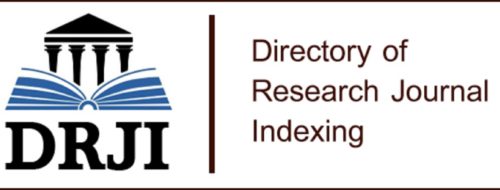Evaluación del Estado en la Central Termogas Machala a través Machine Learning
Palabras clave:
Central Termogas, Ciclo Combinado, Pyomo, Python, OptimizaciónResumen
DOI: https://doi.org/10.46296/ig.v8i15.0259
Resumen
En este estudio se examinó la situación de la Central Termogas Machala. El desafío del proyecto consiste en superar grandes desafíos para asegurar la continuidad y asegurar un suministro eficaz de energía eléctrica, así como el uso eficiente de los recursos naturales y la reducción del impacto ambiental. La central termogas Machala opera en ciclo combinado, dispone de 8 unidades generadoras correspondientes a Machala I y Machala II, con una potencia total de 187 MW. Utilizando la programación en Python y la librería Pyomo para el proceso de optimización, se pudo examinar las variables de costos de combustible, potencia y energía eléctrica de la planta. La meta principal es reducir los costos de producción de energía eléctrica y las limitaciones están vinculadas a los costos de inicio, parada y el equilibrio de potencia. Además, para solucionar el problema se utiliza GNU Linear Programming Kit (GLPK), ya que el tipo de programación sugerido es entero lineal mixta. Mediante el análisis efectuado, se pudo determinar qué generadores térmicos pueden funcionar simultáneamente, elaborar planes de mantenimiento para la salida programada de estos generadores y determinar la energía total generada.
Palabras clave: Central Termogas, Ciclo Combinado, Pyomo, Python, Optimización.
Abstract
This study examined the situation of the Termogas Machala power plant. The challenge of the project is to overcome major challenges to ensure continuity and ensure an efficient supply of electricity, as well as the efficient use of natural resources and the reduction of environmental impact. The Machala thermal power plant operates in a combined cycle, has 8 generating units corresponding to Machala I and Machala II, with a total power of 187 MW. Using Python programming and the Pyomo library for the optimization process, it was possible to examine the variables of fuel, power and electric energy costs of the plant. The main goal is to reduce the electrical energy production costs, and the constraints are linked to the startup, shutdown and power balance costs. In addition, GNU Linear Programming Kit (GLPK) is used to solve the problem, since the type of programming suggested is mixed linear integer. Through the analysis carried out, it was possible to determine which thermal generators can operate simultaneously, to develop maintenance plans for the scheduled output of these generators and to determine the total energy generated.
Keywords: Combined cycle, Pyomo, Python, Optimization, Thermogas Plant.
Información del manuscrito:
Fecha de recepción: 14 de febrero de 2025.
Fecha de aceptación: 24 de abril de 2025.
Fecha de publicación: 10 de mayo de 2025.
Citas
P. Manke, S. Rungta, and S. Bharti, “Forecast Load Demand in Thermal Power Plant with Machine Learning Algorithm: A Review,” Electric Power Components and Systems, 2024, [Online]. Available: https://api.semanticscholar.org/CorpusID:266916716
D. Pila, C. Quinatoa, L. Camacho, and J. Vaca, “Transient Stability Analysis of the Ecuadorian Electrical System: Case of the Southern Segment,” WSEAS Transactions on Power Systems, vol. 19, pp. 360–373, 2024, doi: 10.37394/232016.2024.19.31.
E. E. Ogar, S. Chaitusaney, and W. Benjapolakul, “Solar Power Plant Capacity Monitoring Using Random Forest Machine Learning Algorithm,” 2024 IEEE/IAS Industrial and Commercial Power System Asia (I&CPS Asia), pp. 67–72, 2024, [Online]. Available: https://api.semanticscholar.org/CorpusID:274468093
T. Haigler, “Power Plant Condition Assessment through Engineering, Materials Science, and NDT 4.0 Technology,” e-Journal of Nondestructive Testing, 2022, [Online]. Available: https://api.semanticscholar.org/CorpusID:254775433
G. S. Patil, U. S. Patil, and P. P. Shinde, “Enhancing Power Transformer Reliability through Machine Learning-Based Fault Prediction Using Dissolved Gas Analysis,” 2024 Third International Conference on Power, Control and Computing Technologies (ICPC2T), pp. 72–76, 2024, [Online]. Available: https://api.semanticscholar.org/CorpusID:268701307
J. I. Aizpurua, S. Mcarthur, B. G. Stewart, B. Lambert, J. G. Cross, and V. M. Catterson, “Adaptive Power Transformer Lifetime Predictions Through Machine Learning and Uncertainty Modeling in Nuclear Power Plants,” IEEE Transactions on Industrial Electronics, vol. 66, pp. 4726–4737, 2019, [Online]. Available: https://api.semanticscholar.org/CorpusID:59600342
C. Pacheco et al., “Enhancing Predictive Maintenance of Power Transformers Through Machine Learning Approaches,” Learning and Nonlinear Models, 2024, [Online]. Available: https://api.semanticscholar.org/CorpusID:273291560
M. S. Sachit, H. Z. M. Shafri, A. F. Abdullah, A. S. M. Rafie, and M. B. A. Gibril, “Global Spatial Suitability Mapping of Wind and Solar Systems Using an Explainable AI-Based Approach,” ISPRS Int. J. Geo Inf., vol. 11, p. 422, 2022, [Online]. Available: https://api.semanticscholar.org/CorpusID:251145904
“Predictive Maintenance Beyond Prediction Of Failures,” 2022. [Online]. Available: https://api.semanticscholar.org/CorpusID:268113948
D. Erlapally, Dr. K. Anuradha, Dr. G. Karuna, V. Srilakshmi, and K. Adilakshmi, “Survey Analysis of Solar Power Generation Forecasting,” E3S Web of Conferences, 2021, [Online]. Available: https://api.semanticscholar.org/CorpusID:241445677
C. Quinatoa, D. Albán, X. Proaño, and L. Camacho, “Development of an Algorithm for Protection against Atmospheric Discharges in Buildings,” Revista Politecnica, vol. 55, no. 1, pp. 51–60, Feb. 2025, doi: 10.33333/rp.vol55n1.05.
R. Loganantharaj, G. Palm, and M. Ali, “Intelligent problem solving : methodologies and approaches : 13th International Conference on Industrial and Engineering Applications of Artificial Intelligence and Expert Systems, IEA/AIE 2000, New Orleans, Louisiana, USA, June 19-22, 2000 : proceedings,” 2000. [Online]. Available: https://api.semanticscholar.org/CorpusID:61041622
S. Boubaker, S. Kamel, N. Ghazouani, and A. Mellit, “Assessment of Machine and Deep Learning Approaches for Fault Diagnosis in Photovoltaic Systems Using Infrared Thermography,” Remote. Sens., vol. 15, p. 1686, 2023, [Online]. Available: https://api.semanticscholar.org/CorpusID:257674053
Y. Pan et al., “Broken Power Strand Detection with Aerial Images: A Machine Learning based Approach,” 2020 IEEE International Smart Cities Conference (ISC2), pp. 1–7, 2020, [Online]. Available: https://api.semanticscholar.org/CorpusID:226293664
H. Moreno, C. Rueda-Ayala, V. Rueda-Ayala, Á. Ribeiro, C. Ranz, and D. Andújar, “Machine Learning-Powered Segmentation of Forage Crops in RGB Imagery Through Artificial Sward Images,” Agronomy, 2025, [Online]. Available: https://api.semanticscholar.org/CorpusID:276029075
Dr. P. Deeskow, T. Kamiński, and U. Steinmetz, “ANOMALY DETECTION IN POWER PLANT DATA OF A LARGE COAL FIRED POWER PLANT – EXPERIENCE FROM THE RECENT PROJECTS,” 2018. [Online]. Available: https://api.semanticscholar.org/CorpusID:89607781
H. J. Mackenzie., “Short-Term Forecasting of Wind Power Plant Generation for System Stability and Provision of Ancillary Services,” 2017. [Online]. Available: https://api.semanticscholar.org/CorpusID:37876434
Y. H. Kim, J. Kim, and J. Jeon, “How to Predict the PV Module with Maximum Power Output Predictingalgorithm Based on Artificial Intelligence Technology,” 2024 IEEE 52nd Photovoltaic Specialist Conference (PVSC), p. 1536, 2024, [Online]. Available: https://api.semanticscholar.org/CorpusID:274060797
S. Roy, S. Tufail, M. Tariq, and A. I. Sarwat, “Photovoltaic Inverter Failure Mechanism Estimation Using Unsupervised Machine Learning and Reliability Assessment,” IEEE Trans Reliab, vol. 73, pp. 1418–1432, 2024, [Online]. Available: https://api.semanticscholar.org/CorpusID:268454893
J. R. Vaca González, C. Quinatoa, J. Ortiz, and L. Camacho, “Evaluación de modelos de optimización convexos para minimizar pérdidas en el sistema de distribución,” Revista Conectividad, vol. 5, no. 3, pp. 62–78, Jul. 2024, doi: 10.37431/conectividad.v5i3.152.
A. and P. V. and C. A. and C. L. and O. J. Quinatoa Carlos and Chasi, “Optimization Model for Coordinated Multistage Planning of the Generation-Transmission System with Demand Forecasting Using Neural Networks,” in Proceedings of the 4th International Conference on Electronic Engineering and Renewable Energy Systems—Volume 1, A. and M. A. and R. A. and C. M. Hajji Bekkay and Gagliano, Ed., Singapore: Springer Nature Singapore, 2025, pp. 573–581.
A. G. Ahungwa, C. Ioana, V. Bouillet, B. Michel, A. Bombenger, and P. Véras, “Machine Learning-Assisted Operation Monitoring Analytics on a Hydro Power Plant,” 2024 6th Global Power, Energy and Communication Conference (GPECOM), pp. 461–471, 2024, [Online]. Available: https://api.semanticscholar.org/CorpusID:270974092
Publicado
Cómo citar
Número
Sección
Licencia
Derechos de autor 2025 Revista Científica INGENIAR: Ingeniería, Tecnología e Investigación. ISSN: 2737-6249.

Esta obra está bajo una licencia internacional Creative Commons Atribución-NoComercial-CompartirIgual 4.0.

















